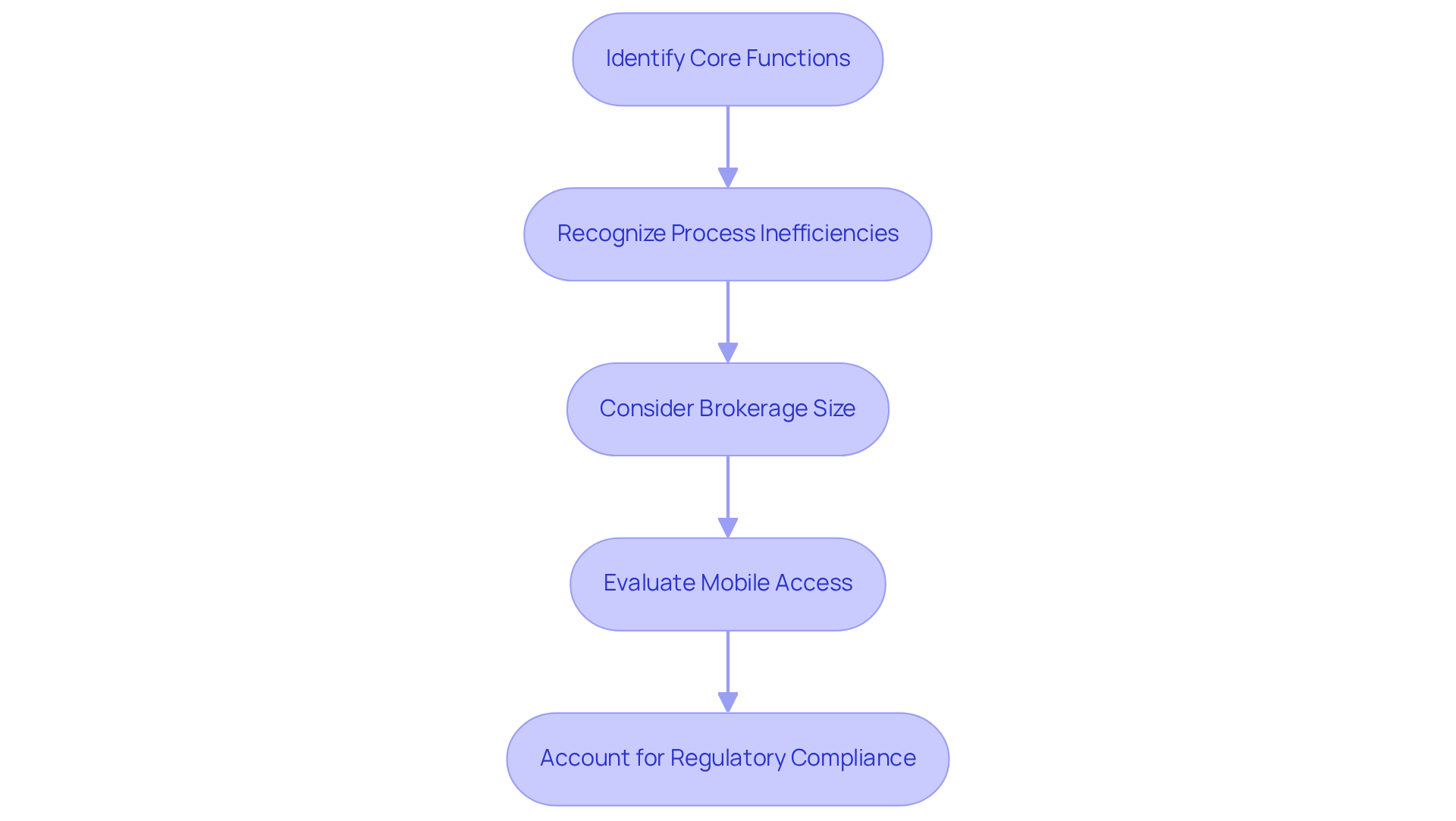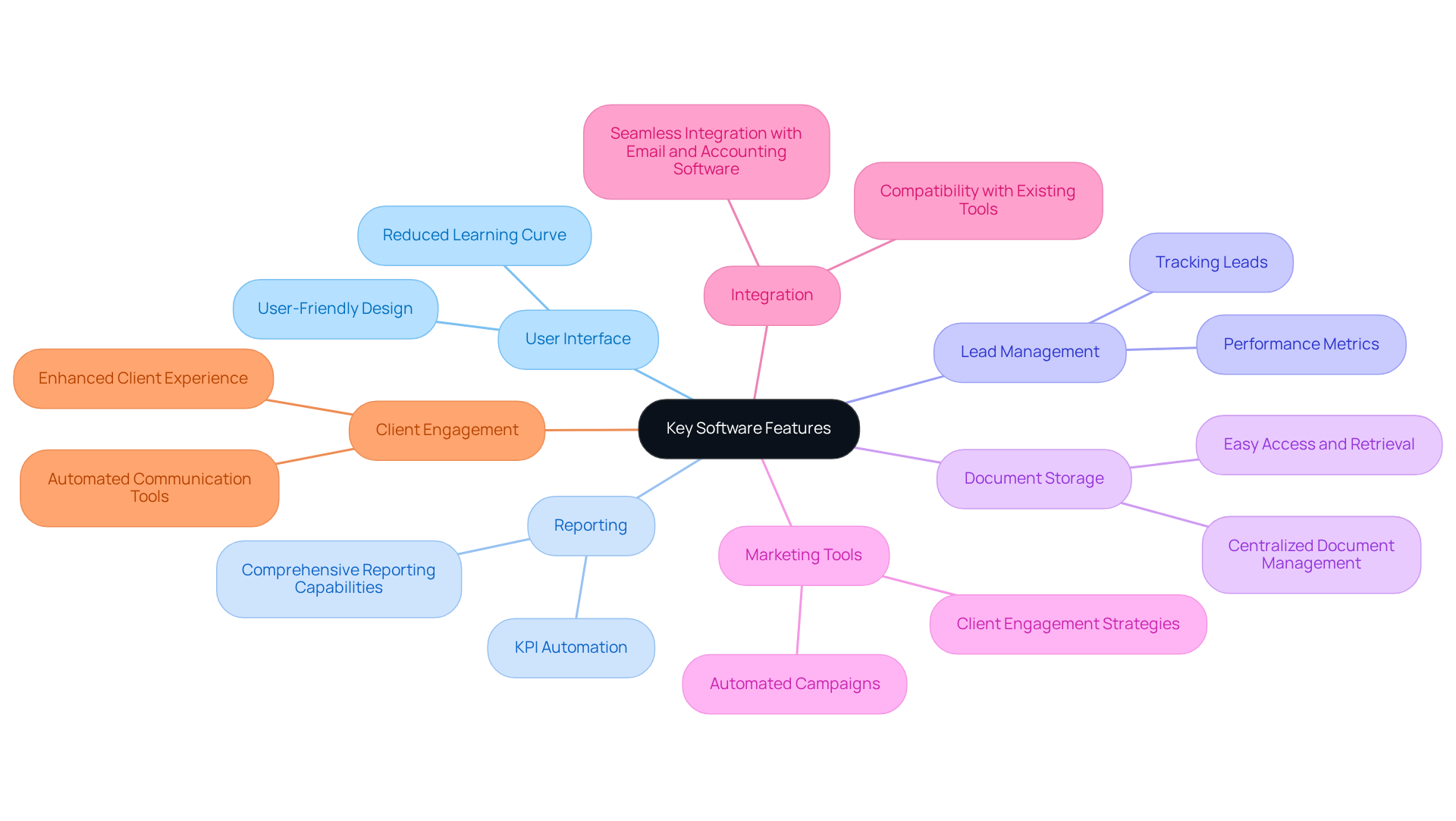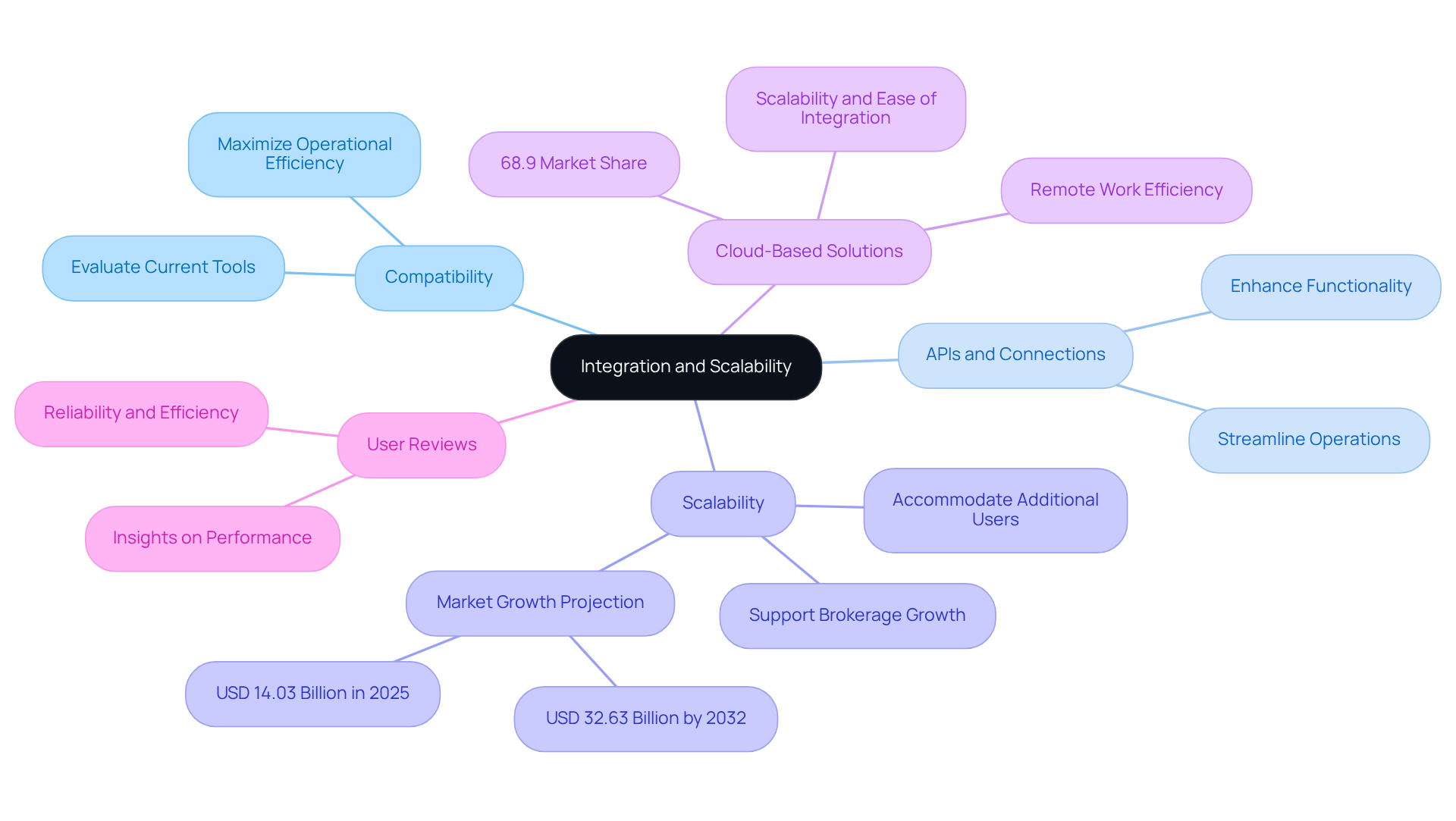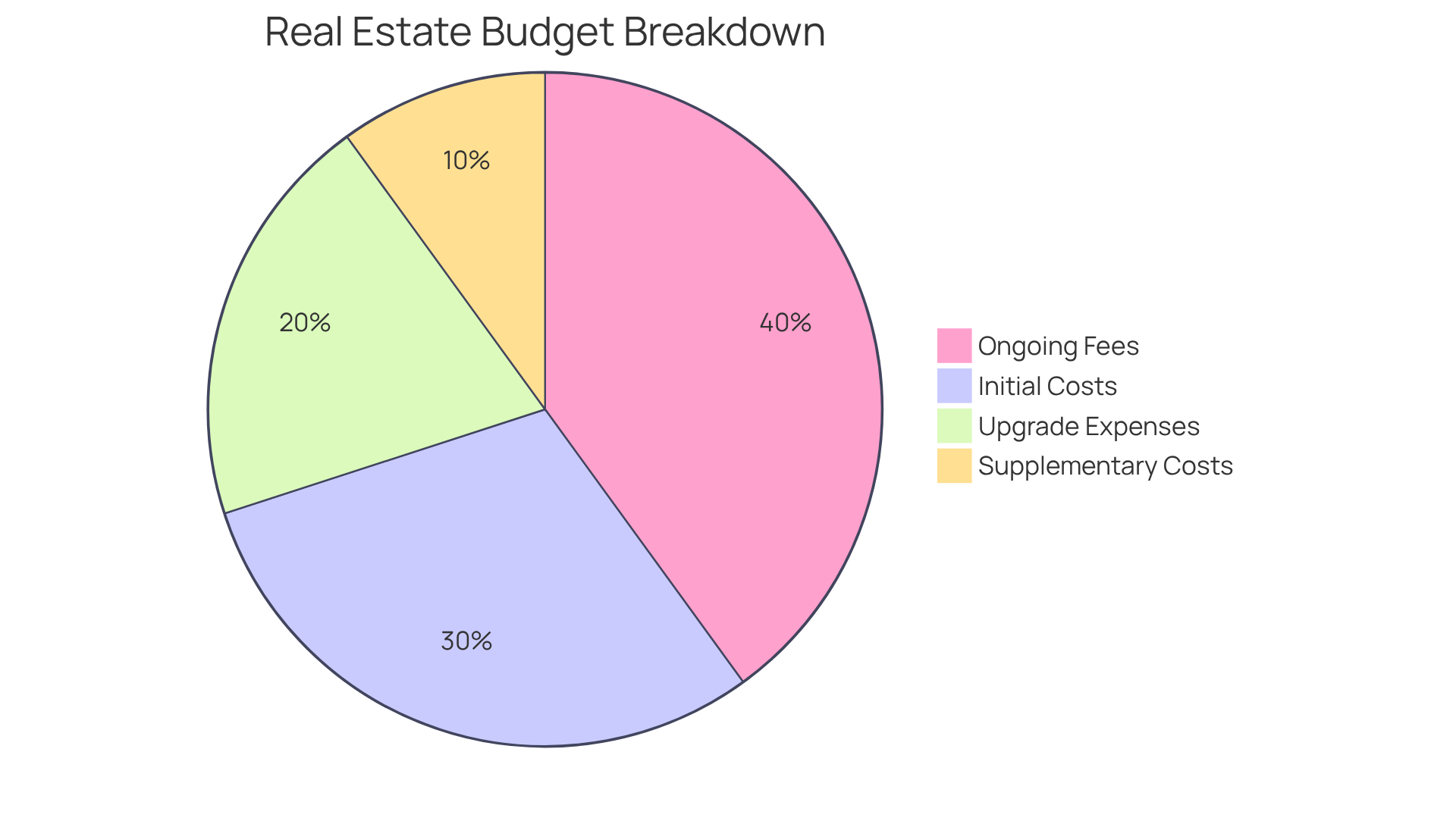Overview
Choosing the right real estate software for brokers involves several essential steps.
- Assess the specific needs of the brokerage.
- Evaluate key software features to ensure the solution aligns with operational requirements.
- Consider integration and scalability, which can significantly impact long-term usability.
- Review costs and budget constraints for informed decision-making.
A thorough understanding of these factors not only leads to improved operational efficiency but also enhances productivity and client engagement, ultimately aligning the software with the brokerage's unique requirements.
Introduction
Navigating the intricate landscape of real estate software presents a formidable challenge for brokers seeking to elevate their operations. With a plethora of options at their disposal, it becomes imperative to effectively discern the right software to maximize efficiency and enhance client satisfaction. As brokers evaluate their distinct needs, they frequently confront pivotal questions regarding:
- Essential features
- Integration capabilities
- Budget considerations
What critical steps can facilitate a successful software selection? How can brokers ensure they make informed decisions that align with their operational objectives?
Assess Your Brokerage Needs
- Identify the core functions essential for your brokerage, such as Customer Relationship Management (CRM), transaction management systems, and the use of real estate software for brokers. These elements are crucial for streamlining operations and enhancing customer interactions.
- Recognize specific issues or inefficiencies in your existing processes. For instance, delays in transaction handling or communication challenges with customers must be addressed effectively with innovative solutions.
- Consider the size of your brokerage and the number of users requiring access to the program. This ensures scalability and ease of use for all team members, fostering a more efficient workflow.
- Evaluate the necessity for mobile access, particularly for agents working remotely or meeting clients off-site. Such accessibility is vital for maintaining productivity and responsiveness in today's fast-paced environment.
- Take into account any regulatory compliance requirements unique to your region. It is imperative that the solution you choose adheres to local laws and industry standards, safeguarding your brokerage's operations.

Evaluate Key Software Features
Prioritize user-friendly interfaces that significantly reduce the learning curve for new users. Comprehensive reporting capabilities are essential for effectively tracking performance metrics. For instance, a Calgary-based organization with over 5,600 licensed realtors implemented a dashboard to automate KPI updates, which has notably enhanced data accessibility and visualization.
Ensure that the system encompasses vital features such as:
- Lead management
- Document storage
- Marketing tools
to streamline operations. Compatibility with existing tools, including email and accounting software, is crucial to facilitate seamless integration.
Look for features that enhance client engagement, such as automated communication tools, which can greatly improve the overall client experience. Effective reporting through real estate software for brokers can enhance decision-making for real estate brokers, ultimately leading to improved operational efficiency and strategic planning.

Consider Integration and Scalability
- Evaluate the application’s compatibility with your current tools and platforms to ensure seamless integration. This foundational step is crucial for maximizing operational efficiency.
- Seek APIs and external connections that can enhance functionality and streamline operations. Industry insights reveal that the integration of advanced technologies is a key growth driver in the market for real estate software for brokers, making this a vital consideration.
- Assess the application's scalability to support your brokerage's growth. This includes evaluating its capacity to accommodate additional users or functionalities as needed. The Real Estate Software Market for brokers is projected to expand from USD 14.03 billion in 2025 to USD 32.63 billion by 2032, highlighting the increasing demand for scalable solutions.
- Consider cloud-based solutions, which currently hold a 68.9% market share due to their scalability and ease of integration. Such solutions empower your team to work efficiently from any location, a significant advantage in today's dynamic environment.
- Investigate user reviews to gain insights into how effectively the application performs in real-world scenarios. This will provide valuable information regarding its reliability and efficiency. As Tiffani Bova points out, many firms struggle to balance short-term sales objectives with long-term growth, underscoring the importance of selecting tools that support sustainable scaling.

Review Costs and Budget Constraints
Establishing a budget is crucial when selecting real estate applications, encompassing initial costs, ongoing subscription fees, and potential upgrade expenses. Start by comparing pricing models, such as one-time purchases versus subscription-based options, to identify which aligns best with your financial strategy. Additionally, consider any supplementary costs associated with training, support, or integrations that may arise after the initial purchase.
Evaluating the return on investment (ROI) is essential; assess how the system can enhance efficiency and productivity within your operations. A well-executed technological solution can significantly simplify processes, leading to increased revenue potential. According to Mariaca Wealth Management, "How and when you claim Social Security retirement benefits is one of the most important financial decisions you'll make," highlighting the importance of informed financial choices, including budgeting for software.
If upfront costs pose a challenge, explore financing options that can alleviate the financial burden while still granting access to necessary tools. By carefully reviewing these aspects, you can make an informed decision that aligns with your budgetary constraints and operational goals.

Conclusion
Choosing the right real estate software is a pivotal decision for brokers aiming to enhance operational efficiency and client engagement. By carefully evaluating brokerage needs, identifying essential software features, considering integration and scalability, and reviewing costs, brokers can make informed choices that align with their strategic objectives.
The article outlines four essential steps:
- Assessing the specific needs of the brokerage.
- Evaluating key software features that enhance usability and client interaction.
- Ensuring the chosen solution integrates seamlessly with existing systems while being scalable for future growth.
- Reviewing costs to remain within budget while maximizing ROI.
Each step is crucial in selecting software that not only meets current demands but also adapts to future challenges.
Ultimately, investing time in this selection process can lead to significant improvements in productivity and client satisfaction. As the real estate software market continues to evolve, staying informed about the latest tools and technologies will empower brokers to thrive in a competitive landscape. Embracing these steps not only simplifies day-to-day operations but also positions brokerages for long-term success in an ever-changing industry.




